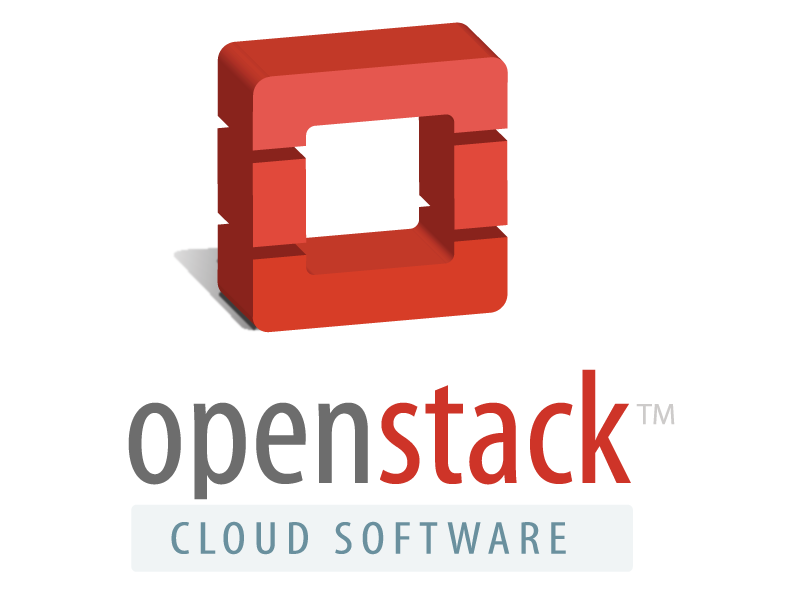Using

What is OpenStack?
Is a global collaboration of developers and cloud computing technologists producing the ubiquitous open source cloud computing platform for public and private clouds.
OpenStack mission
"To produce the ubiquitous Open Source Cloud Computing platform that will meet the needs of public and private clouds regardless of size, by being simple to implement and massively scalable"
OpenStack
ComputingOpenStack Compute (Nova) OpenStack Image service (Glance) |
NetworkingOpenStack Networking (Neutron) |
StoringOpenStack Object Storage (Swift) OpenStack Block Storage (Cinder) |
Current OpenStack programs
-
OpenStack Compute (code-name Nova) - integrated project since Austin release
-
OpenStack Networking (code-name Neutron) - integrated project since Folsom release
-
OpenStack Object Storage (code-name Swift) - integrated project since Austin release
-
OpenStack Block Storage (code-name Cinder) - integrated project since Folsom release
-
OpenStack Identity (code-name Keystone) - integrated project since Essex release
-
OpenStack Image Service (code-name Glance) - integrated project since Bexar release
-
OpenStack Dashboard (code-name Horizon) - integrated project since Essex release
-
OpenStack Telemetry (code-name Ceilometer) - integrated project since the Havana release
-
OpenStack Orchestration (code-name Heat) - integrated project since the Havana release
-
OpenStack Database (code-name Trove) - integrated project since the Icehouse release
New capabilities under development for Juno and beyond
What is DevStack?
Is a script to quickly create an OpenStack development environment. It can also be used to demonstrate starting/running OpenStack services and provide examples of using them from a command line.
DevStack mission
To provide and maintain tools used for the installation of the central OpenStack services from source, suitable for development and operational testing. It also demonstrates and documents examples of configuring and running services as well as command line client usage.
Quick Start
0. Select a Linux Distribution
-
Ubuntu 12.04
-
Fedora 20
1. Install the selected OS
2. Download DevStack
$ git clone https://github.com/openstack-dev/devstack.git 3. Configure
4. Start the install
$ cd devstack; ./stack.sh Minimal Configuration
[[local|localrc]]
ADMIN_PASSWORD=secrete
DATABASE_PASSWORD=$ADMIN_PASSWORD
RABBIT_PASSWORD=$ADMIN_PASSWORD
SERVICE_PASSWORD=$ADMIN_PASSWORD
SERVICE_TOKEN=a682f596-76f3-11e3-b3b2-e716f9080d50
#FIXED_RANGE=172.31.1.0/24
#FLOATING_RANGE=192.168.20.0/25
#HOST_IP=10.3.4.5
Start a DevStack
Clone
$ git clone https://github.com/openstack-dev/devstack.git
Add a stack user
# cd devstack
# export STACK_USER=stack
# tools/create-stack-user.sh
# echo -e "secrete\nsecrete" | (passwd $STACK_USER)
Configure
$ cd devstack
$ vi local.conf [[local|localrc]]
STACK_USER=stack
ADMIN_PASSWORD=secrete
DATABASE_PASSWORD=$ADMIN_PASSWORD
RABBIT_PASSWORD=$ADMIN_PASSWORD
SERVICE_PASSWORD=$ADMIN_PASSWORD
SERVICE_TOKEN=a682f596-76f3-11e3-b3b2-e716f9080d50
Launch
$ ./stack.sh
.
.
.
.
Horizon is now available at http://10.10.10.40/
Keystone is serving at http://10.10.10.40:5000/v2.0/
Examples on using novaclient command line is in exercise.sh
The default users are: admin and demo
The password: secrete
This is your host ip: 10.10.10.40
2014-07-21 07:49:14.808 | stack.sh completed in 1334 seconds.
$
DevStack À la carte
Prerequisites
- Install virtualbox
- Install vagrant
- Install git
Clone
$ git clone https://github.com/patux/devstack-minimal-vagrant.git Launch
$ cd devstack-minimal-vagrant
$ vagrant up
.
.
==> default: Horizon is now available at http://10.10.10.40/
==> default: Keystone is serving at http://10.10.10.40:5000/v2.0/
==> default: Examples on using novaclient command line is in exercise.sh
==> default: The default users are: admin and demo
==> default: The password: secrete
==> default: This is your host ip: 10.10.10.40
==> default: 2014-07-21 07:49:14.808 | stack.sh completed in 1334 seconds.
$ vagrant ssh
From the USB - (Offline mode)
-
Install
Virtualbox
- Install Vagrant
- Make sure to enable hardware virtualization
-
sudo grep --color vmx /proc/cpuinfo -
Unzip devstack-minimal-vagrant-master.zip
- Add the vagrant box with openstack
Configure the environment
$ cd devstack-minimal-vagrant
$ vagrant box add trusty64-openstack trusty64-openstack.box
$ vim Vagrantfile
$ vagrant up --no-provision
$ vagrant ssh
$ cd devstack
$ vim local.conf
local.conf
[[local|localrc]]
STACK_USER=vagrant
ADMIN_PASSWORD=secrete
DATABASE_PASSWORD=secrete
RABBIT_PASSWORD=secrete
SERVICE_PASSWORD=secrete
SERVICE_TOKEN=a682f596-76f3-11e3-b3b2-e716f9080d50
OFFLINE=true
RECLONE=false
GUEST_INTERFACE_DEFAULT=eth1
HOST_IP_IFACE=eth1
[[post-config|$NOVA_CONF]]
[DEFAULT]
flat_interface = eth1
vlan_interface = eth1
$ ./stack.sh
Horizon

Screen commands
-
Next screen: CTRL-A-N
-
Previous screen: CTRL-A-P
-
Pause the output: CTRL+ESC (scroll around with "vi" comands)
-
Un-pause the output: CTRL-ESC again
-
List windows: CTR+A+"
cli basics
$ source openrc admin admin
$ echo $OS_TENANT_NAME
$ echo $OS_USERNAME
$ echo $OS_PASSWORD
$ echo $OS_AUTH_URL
$ source openrc demo demo
$ echo $OS_TENANT_NAME
$ echo $OS_USERNAME
$ echo $OS_PASSWORD
$ echo $OS_AUTH_URL
